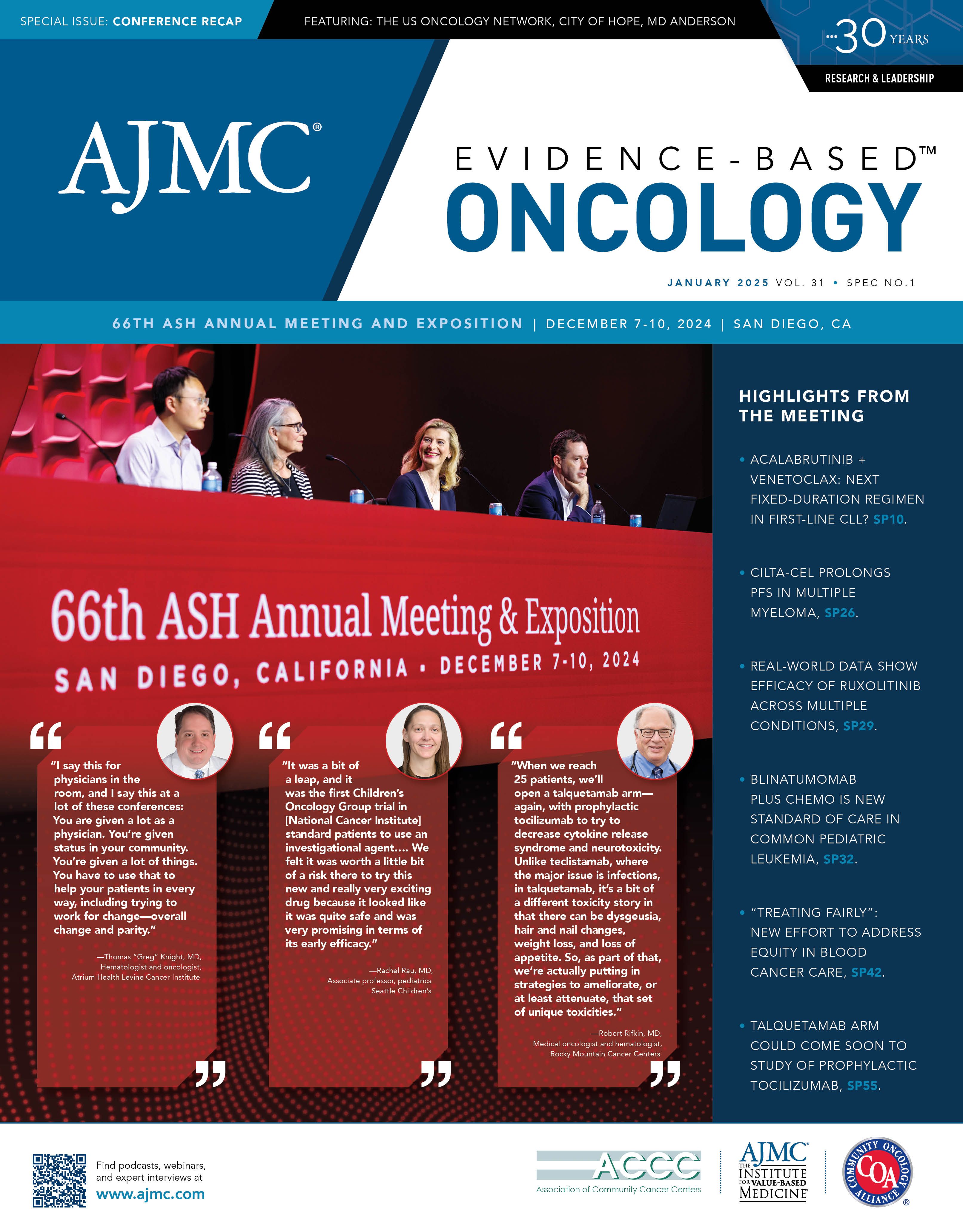- Center on Health Equity & Access
- Clinical
- Health Care Cost
- Health Care Delivery
- Insurance
- Policy
- Technology
- Value-Based Care
SPOTLIGHT: Shorter Duration of Venetoclax Is Possible for Some Patients With Newly Diagnosed AML
Tailoring the duration of venetoclax (Venclexta; AbbVie, Genentech) treatment may optimize the therapeutic efficacy of the treatment in patients with newly diagnosed acute myeloid leukemia (AML), Amir Ali, PharmD, BCOP, clinical pharmacist specialist at the University of Southern California in Los Angeles, explained.
Ali was a coauthor on an abstract about the efficacy of shorter durations of venetoclax in patients with AML.1 Venetoclax and hypomethylating agents are the preferred treatment for older or unfit patients with newly diagnosed AML, he explained in an interview with The American Journal of Managed Care (AJMC). Although the typical regimen is 28 days, Ali and his colleagues found that a 21-day regimen had lower rates of refractory disease, shorter time to minimal residual disease negativity, and improved cumulative incidence of relapse.
AJMC: Can you discuss the pros and cons from a patient perspective of a shorter treatment duration of venetoclax?
Ali: There have been recent advancements in the treatment of AML, but one of the long-standing therapeutic options out there has been the combination of a hypomethylating agent and a BCL2 inhibitor, so combinations of azacitidine or decitabine in combination with venetoclax. This regimen has been used for quite some time, especially for our [older] patients [with frailty] in different combinations.
Now the 1 nuance with this therapy includes the duration of therapy: how long we should have these patients on the venetoclax therapy. If you look at the package insert, patients are on therapy for 28 days, but we know that there are now ample data that look at potentially decreasing the duration of therapy. And there are many benefits of decreasing the duration of therapy for venetoclax. I’ll share with you that venetoclax comes with its own unique challenges.
So you do have to ramp up the dose because of the risk of tumor lysis syndrome. Along [with] that risk comes prolonged neutropenia for these patients. These patients can have low counts that require admission observation for febrile neutropenia. These patients often get admitted. And when you’re able to decrease that duration of therapy, you’re able to potentially discharge patients faster, have less toxicity for these patients, but we need to ensure the efficacy is maintained for these patients. And that’s exactly what our study looked at: [when] decreasing the duration of therapy, does that have the ability to maintain the efficacy and safety for these patients?
Reference
Ginosyan AA, Ashouri K, Humayun L, et al. Optimizing venetoclax duration in combination with hypomethylating agents for newly diagnosed AML: impact on treatment response and survival outcomes. Abstract presented at: 66th American Society of Hematology Annual Meeting and Exposition; December 7-10, 2024; San Diego, CA. Abstract 2892.

Trends in Hospital Pricing for Vulnerable Emergency Department Users, 2021-2023
December 4th 2025Self-pay emergency department prices rose significantly from 2021 to 2023, especially at for-profit and system-affiliated hospitals, highlighting growing affordability challenges for uninsured and underinsured patients.
Read More
